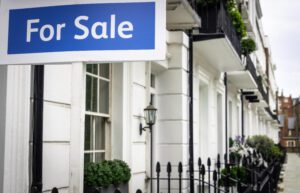
UK house prices experienced a modest rise in June, marking the second consecutive month of growth, according to high street lender Nationwide. However, economists caution that prices are likely to “flatline at best” over the summer due to the impact of increased mortgage rates.
The latest figures from Nationwide show that the average price of a home in Britain rose by 0.2 per cent in June compared with May. This brings house prices to 1.5 per cent higher than they were at the same time last year, though they remain about 3 per cent below the peak recorded in the summer of 2022.
The typical home now costs £266,064, the highest price recorded since October 2022, following the mini-budget by Liz Truss and Kwasi Kwarteng. Robert Gardner, Nationwide’s chief economist, noted, “Housing market activity has been broadly flat over the last year.”
This time last year, few would have predicted that house prices would remain stable given the rapid increase in mortgage rates, which has reduced affordability for potential buyers and brought the previously booming pandemic-era housing market to a halt.
Transaction volumes have been more significantly affected than prices by the recent market downturn. While sales are comparable to last year’s levels, they are down by 15 per cent from 2019. “Transactions involving a mortgage are down even more, nearly 25 per cent, reflecting the impact of higher borrowing costs,” Gardner said. In contrast, cash transactions have increased by about 5 per cent compared to pre-pandemic levels.
Industry experts believe that a shortage of homes for sale has helped to support prices, with many people delaying moving plans in hopes of improved affordability. Additionally, the market has seen few forced sales, thanks to more accommodating banks, better stress-testing, and pandemic savings.
Recent months have shown signs of more homes coming onto the market, but mortgage rates, which were expected to decrease over the summer, have remained high. Andrew Wishart, senior UK economist at Capital Economics, said, “With signs that mortgage rates are causing demand to falter and that supply is improving, we think that house prices will flatline at best over the coming months.” He had initially forecast a 3 per cent rise in 2024, but now expects a modest increase of 0.5 per cent.
Gardner acknowledged that “housing affordability is still stretched.” He calculated that a borrower earning the average UK income, buying a typical first-time buyer property with a 20 per cent deposit, would have a monthly mortgage payment equivalent to 37 per cent of their take-home pay, well above the long-run average of 30 per cent.
Nationwide’s data reveals a continuing north-south divide in the UK housing market. Prices have generally risen in northern regions over the past year, while they have fallen in most areas south of Birmingham. The fastest price increases were seen in northwest England and Northern Ireland, where prices rose by 4.1 per cent over the past 12 months. In contrast, house prices in the southwest of England fell by 1.7 per cent, and by 1.3 per cent in East Anglia. London was an exception in the south, with prices in the capital rising by 1.6 per cent compared to last June.
Read more:
UK house prices see slight uptick in june despite high mortgage costs





